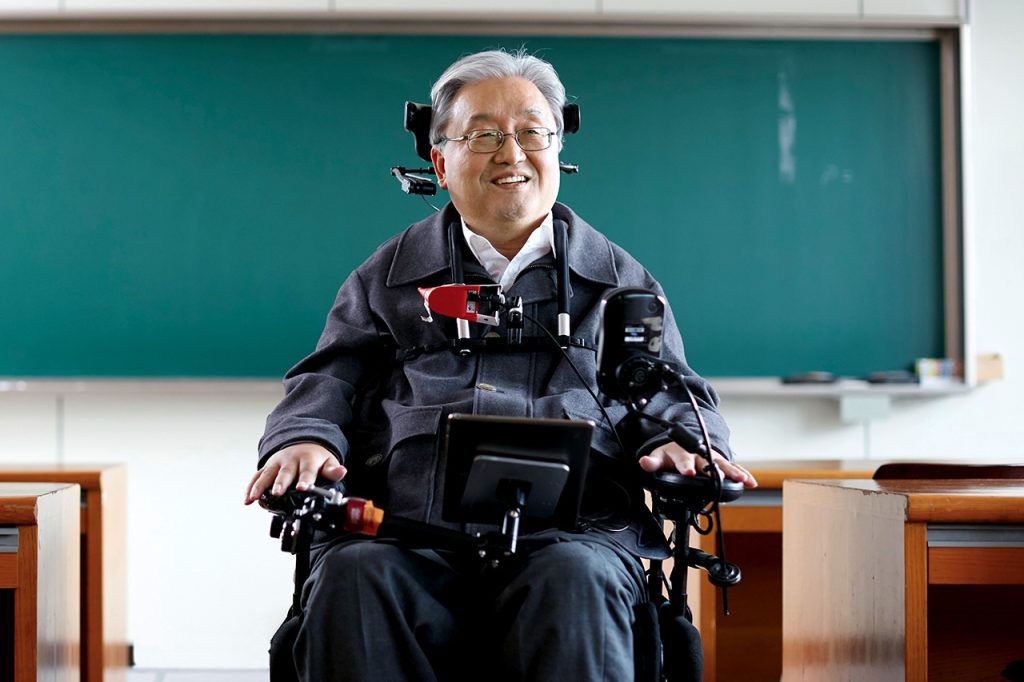Sang-Mook Lee
Professor
School of Earth and Environmental Sciences & Interdisciplinary Program in Computational Sciences
Seoul National University

Office:
Building 25-1, Room 318
1 Daehak-ro, Gwanak-gu
Seoul 08826, Republic of Korea
Contact:
Tel) +82-2-880-6745
Fax) +82-2-871-3269
Email) smlee@snu.ac.kr
Profile:
Sang-Mook Lee is an associate professor at the Seoul National University (SNU), School of Earth and Environmental Sciences (SEES) in Korea where he specializes in marine geology and geophysics. Sang-Mook’s main interest is in plate tectonics, in particular, active geologic processes along plate boundaries including mid-ocean ridges, subduction zones and backarc spreading centers. As a result, he has conducted most of his field research outside Korea, often spending months at sea in remote parts of the globe.
Sang-Mook graduated from the Seoul National University, Department of Oceanography in 1985 where he studied marine geology. He then entered the Graduate School of Seoul National University, but after one year into the program, he decided to go abroad for his higher degree. In 1986, he entered Massachusetts Institute of Technology (MIT) and Woods Hole Oceanographic Institution (WHOI) Joint Program in Oceanography. During the first two years of the Joint Program, Sang-Mook worked with David Aubrey on the hydrodynamics of tidal inlets. However, he became fascinated by recent studies of mid-ocean ridges and geodynamic issues and changed his research to marine geophysics. Under the supervision of Sean Solomon and Mike Purdy, he worked on underway geophysical data collected over the East Pacific Rise around 9 degrees 30 minutes north onboard R/V Thomas Washington in 1988. Sang-Mook used various sets of geophysical data such as multibeam echosounding, gravity, magnetic, and seismic data, which have different spatial resolutions and constraints, to determine the crustal and upper mantle structure of a young, fast-spreading mid-ocean ridge. In addition, he applied boundary element techniques to model stress field to explain the development of normal faulting on the flanks of the East Pacific Rise.
After spending 10 months as Guest Investigator at Woods Hole Oceanographic Institution, Sang-Mook moved to University of Durham in England in February 1996 as a postdoctoral fellow. There his work involved the analyses of underway geophysical data collected over the Rekyjanes Ridge in the northern Mid-Atlantic Ridge just south of Iceland under the auspices of British mid-ocean ridge program (BRIDGE) with Roger Searle. In 1997, he participated in the detailed acoustic imaging survey of the Southwestern Indian Ridge using Towed Ocean Bottom Instrument (TOBI) together with Kensaku Tamaki and Catherine Mevel onboard R/V Marion Dufresne. After almost nine years in US and two years in UK, Sang-Mook finally moved back to Korea in 1998. He spent six years as Senior and Principal Research Scientists at Korea Ocean Research and Development Institute (KORDI) working on geophysical projects around Korea and in the Pacific. From 2000 to 2002, as chief scientist, he ran a series of cruise using R/V Onnuri devoted to understanding global marine scientific issues outside the waters of Korea as part of Daeyang Program.
Sang-Mook conducted detailed marine geophysical surveys of the Ayu Trough, the only divergent boundary in around the Philippine Sea plate, Caroline plate, and several areas within the Bismarck Sea in the northern Papua New Guinea. In 1999, he conducted a long-range acoustic imaging survey of the Korean manganese nodule sectors in the eastern Pacific using MR1 sidescan sonar owned by the University of Hawaii. During the austral summer of 1999-2000, Sang-Mook participated in the marine geophysical survey of the Hero fracture zone and continental shelf east of the South Shetland Trench in Antarctic using R/V Onnuri. In 2000-2001, he served as paleomagnetist in Ocean Drilling Program (ODP) Leg 193, which drilled the active hydrothermal vent fields (PACMANUS) in the Manus backarc basin, Papua New Guinea onboard R/V JOIDES Resolution. In 2001-2002, together with Maurice Tivey and Will Sager, he was one of the co-chief scientists during deeptow magnetic survey of the oldest piece of the seafloor in the Pacific, known as the Jurassic Magnetic Quiet Zone, onboard R/V Thomas G. Thompson. In addition, while at KORDI, Sang-Mook participated in numerous cruises around Korea either as a chief scientist or scientific member. He was also instrumental in the development of ocean-bottom seismometer and deeptow magnetometer and testing of deeptow sonar system delivered to KORDI by Benthos.
Sang-Mook served as a member and representative in various committees and socities, including Korean Ocean Drilling Program and 2002 Western Pacific Geophysics Meeting. He is also the national representative of the InterRidge and chair of the InterRidge Back-Arc Basin Working Group. In December 2004, he moved to the Seoul National University to assume a faculty position in marine geology and geophysics.
Sang-Mook’s current research includes initiation of subduction, development of margin basins, both active and inactive backarc basins, and magnetic anomaly structure and internal rock magnetic properties of hydrothermal vent systems.
On July 2 2006, during a geologic field trip with students in California dessert, Sang-Mook was critically injured in a car accident which made him quadriplegic. The injury on cervical spine number four (C4) completely paralyzed him below his neck and shoulder. After 6 months in hospitals (both in U.S. and Korea) , he returned back to work on wheelchair in January 2007. Despite the disability, he continues to teach and conduct research at Seoul National University with the help of many friends around him.
